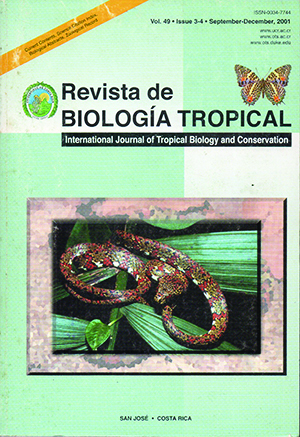Abstract
In the last 20 years Escherichia coli O157: H7 has emerged as a new pathogen, causing worldwide disease, death and economic loss. Different studies have revealed important survival characteristics of this pathogen, although there are divergent criteria about its ability to survive in various mayonnaise formulations. We studied the effect of different mayonnaise concentrations (0 %, 18 %, 37 % and 56 %) (weight/weight) over the survival of the bacterium in common foods from a neotropical environment (Costa Rica). High [107-108 Colony Forming Units (CFU)/ml] and low E. coli populations (104-106 CFU/ml) were inoculated, (three replicates) in meat, chopped cabbage and poultry, and mixed with commercial mayonnaise to obtain the concentrations specified. They were incubated at 12 ºC for 24, 48 and 72 hr. The E. coli O157: H7 enumeration was done according to a standard methodology. Populations of E. coli O157: H7 showed an increasing trend during the first incubation period (48 hr), in all the preparations, regardless of the fat concentration used. Our data indicate that E. coli O157: H7 is capable of surviving and growing in meat, cabbage and poultry mixed with mayonnaise, independently of its concentration.##plugins.facebook.comentarios##

This work is licensed under a Creative Commons Attribution 4.0 International License.
Copyright (c) 2001 Revista de Biología Tropical
Downloads
Download data is not yet available.


